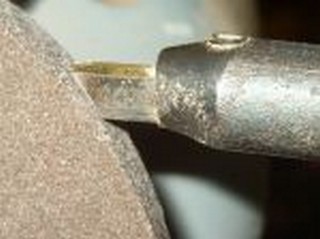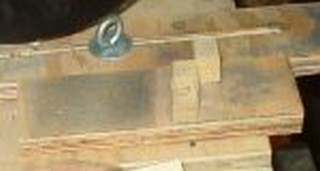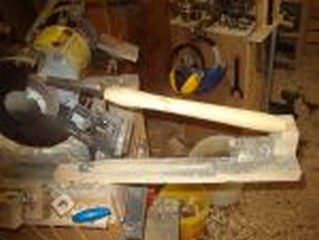
Setting the Jig for Various Tools
The varied shapes of woodturning tools calls for various settings, over and over easy

Setting the jig is a matter of trial and error or, more to my liking, trial and success. Put a gouge that is sharpened your favorite way, say a 1/2" spindle gouge with a lady finger grind, and put it in the appropriate holder. If you have North American sized gouges, that means a holder with a 1/2" shaft hole and a pivot rod at 30&º. If your tools are European sized then the shaft will be wider. Why they are not harmonized for size, I do not know.

Play with the distance the shaft extends from the holder until the bevel rests completely against the wheel.

Make a register mark on the table and arm so as to be able to return the arm to that position every time.

I use the same register mark for all my bowl gouges with an Irish grind, spindle gouges and Oland tools. What changes is the distance each projects from the block. You want easy repeatablilty every time. Some people record the measurement in a note book and measure every time they sharpen. I am lazier. I took a piece of scrap wood, some other small bits and some hot glue. I positioned each tool in the appropriate holder and adjusted for length by checking the grind against the stone.

Then I set the tool against the board and glued a block in place and marked it so I would know which block goes with each tool. In my case that means the 1/4" Oland tool with a 5/8" shaft stops at the 5/8 mark but your system may vary.

The roughing gouge and bowl gouges that sharpen straight across are somewhat different. Draw the arm out until the butt of the tool rests in the pivot and

the bevel is flush with the grinding wheel. Make a registry mark on arm and base for each tool. Use pencil. After a while the wheel gets worn down and the marks need to be erased and redone.
